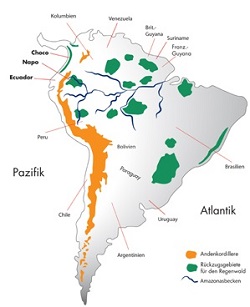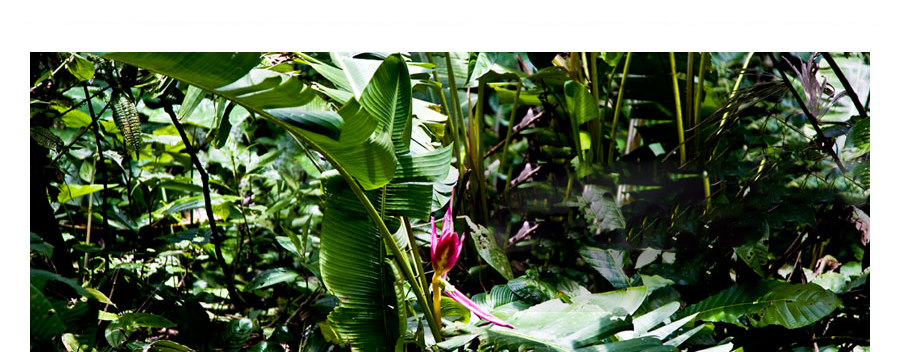PROTECTING THAT WHICH KEEPS US ALIVE
Why is the primeval forest in Ecuador particularly valuable?
The colder temperatures and drought periods of the last ice age transformed much of the tropical rainforest of South America into a savannah. The former primeval forest survived only in secluded areas scattered like islands across the northern half of the subcontinent (see map).
On one hand, this made the settlement of South America possible by land travel (15000 to 25000 years ago); on the other hand, ecosystems that are many millions of years old were maintained in nature in a particularly sustainable manner. As the climate became warmer and more humid, the forest islands grew back together to form the largest current tropical rainforest.
Parts of two of these jungle regions that survived the last ice age are located in Ecuador. They are among the forestlands with the greatest biodiversity in the world: the "Choco" area on the Pacific coast of Colombia extends into northern Ecuador, forming the last section of rainforest in the province of Esmeraldas.
The "jungle island" Napo is the core of today's rainforest area in the Amazon region of Ecuador and in the neighboring countries of Colombia and Peru. The unique biodiversity has also been impacted positively by the geographic location at the foot of the Andes. This natural heritage is in grave danger! The Choco region is already destroyed, for the most part, and the governments of Ecuador, Colombia and Peru have strategies that will result in the certain destruction of the primary forest of the "Napo legacy" within the next twenty years.
South America after the last ice age
© Helma Strobel

AMAZONICA at



